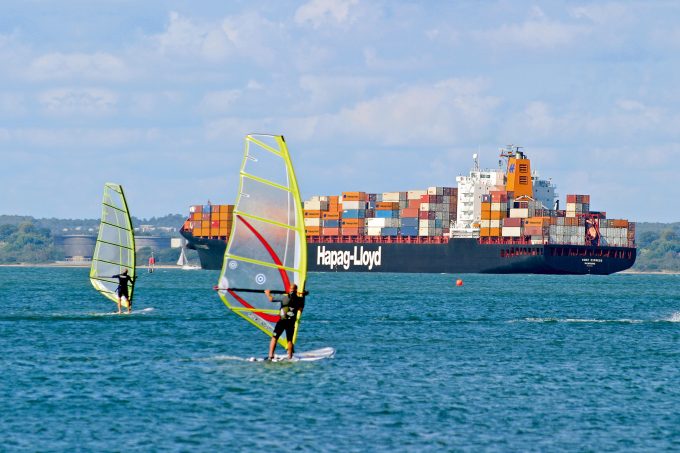Threat of rising oil price adds to frustration for crisis-hit supply chain chiefs
New warnings from the World Bank of surging oil prices, adding to the continuing instability ...

Container hub ports in North Europe appear be coping well with the arrival of a cluster of ships from Asia, delayed after being re-routed around the African coast.
Fears of a repeat of the severe port and landside congestion that plagued the hubs for months after the Ever Given’s six-day blockage of the Suez Canal in 2021 are so far proving unfounded.
According to Hapag-Lloyd’s latest terminal operations update for North Europe, its hub ports of Rotterdam, Hamburg and Southampton saw yard utilisation levels last week spike to between 85% and 90%, from around just 55% in the previous weeks, reflecting the arrival of delayed vessels.
And, as well as the huge increase in vessel exchanges last week, the hubs also had to contend with extremely bad weather in the North Sea, with very strong winds leading to more delays to ship arrivals and departures and the temporary closure for large vessels of the river Elbe in Hamburg.
Furthermore, landside operations were affected by truck disruptions in the vicinity of the Benelux ports and Hamburg, a consequence of industrial action by farmers blocking port access roads with tractors.
Significantly, Hapag reported, empty-container stacks at the North European hubs currently have utilisation levels of around 60% to 65%, meaning carriers have succeeded in evacuating a substantial number of containers for return to Asia in time to avoid an equipment crunch for export bookings.
The German carrier said the outlook for its hubs was one of “a strong trend” reducing yard utilisation back down to manageable 65% to 70% levels, as the pre-Chinese New Year export surge falls out of the system.
Elsewhere, at North American container ports, reported Hapag-Lloyd, there was some congestion at US east and Gulf coast ports that have seen schedule disruptions caused by diversions from both the Panama and Suez canals.
At New York, the carrier reported a three-day wait could be expected for berthing at the Port Liberty Terminal Bayonne facility, but there was “no waiting time expected” at the Maher and APMT terminals.
Further down the coast, at Norfolk, Hapag said “most vessels berth on arrival”, however, the biggest ships could have to wait a couple of days for a berth. And at Savannah, there are vessel berth waiting times of “up to three days, depending on the size of the vessel”, but the port maintained an average gate turn time of a respectable 36 minutes for a single transaction, and a healthy average dwell time of 2.6 days.
On the US west coast, container terminals are seeing an increase in import throughput, partly due to the Red Sea crisis and partly as a result of Panama Canal restrictions, but robust consumer demand has also boosted volumes.
According to the port of Los Angeles Signal data platform, import throughput expected to be discharged at LA’s six facilities this week is 49% higher than a year ago, at 124,693 teu, and for the following two weeks, imports are scheduled to increase by 125% and 107% respectively, compared with the same weeks of last year.
According to the Signal data, there is currently no berth waiting time at the port, with vessels spending an average of 4.4 days alongside for discharge and load operations.
Comment on this article